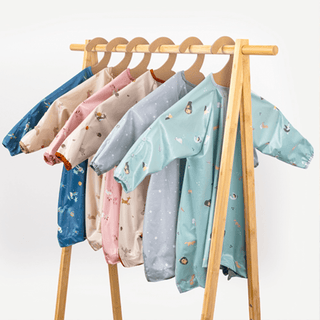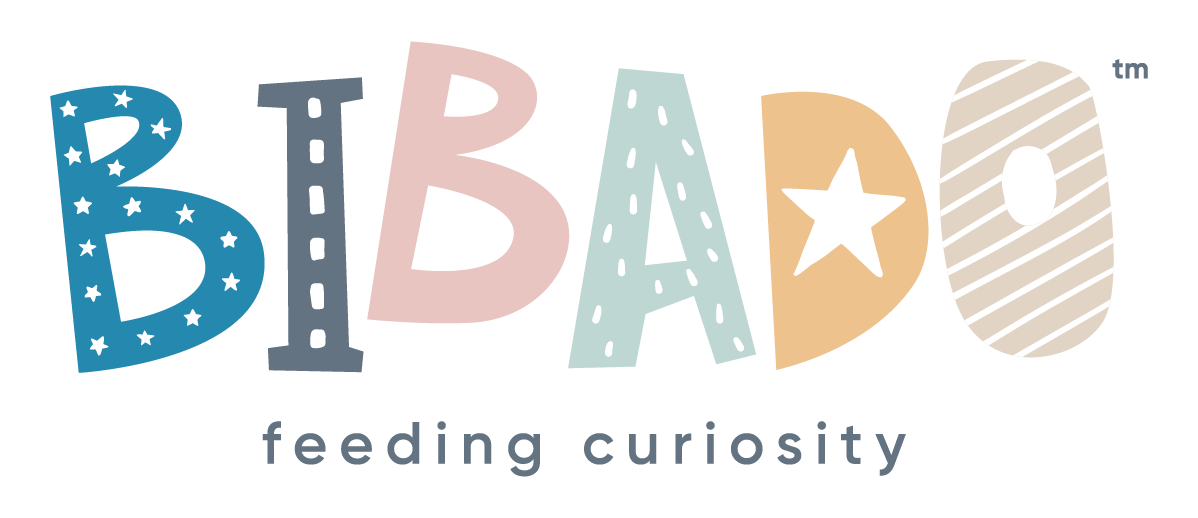Mealtime adventures are better with Bibado! Let our award-winning products make a difference to your weaning journey.
 Shop Now
Shop Now


There are just so many tips and tricks out there for new parents about to start weaning their little ones. That navigating your way through the noise can be a bit overwhelming! So we spoke to mum of three and founder of the Nature Doc Clinic, Lucinda Miller on our Feeding Curiosity podcast, and asked for her top tips on weaning to help make this easier for parents by creating some bite sized information.

Lucinda has a huge passion for paediatric nutrition and has around 20 years of experience as a naturopath. As well as her top tips, Lucinda provided some fascinating insights such as why kids sometimes only want to eat beige foods - which we’ve all experienced, but we'd never known why, or what to do about it before.
It is important to note that current guidelines from the NHS and WHO recommend that weaning should begin at around 6 months. You can find out more information about starting weaning from their websites, your doctor and health visitor.
Why are mealtimes and early food adventures for babies so important?
Lucinda: First of all it’s about building a wonderful relationship with food. If you love food you will be sitting around the family table building relationships, so going forward it’s a wonderful way to bring the family together. We all know that food is there to nourish as well as being delicious. It’s really important to get the right foods in early, because food is there to nourish the brain, the immune system and gut health. If you can get all three together then you’re going to have a really strong, robust child who’s going to be able to navigate all of the stresses and ups and downs of life.
Mealtimes help to build a wonderful relationship with food, and just as importantly, are a brilliant way to bring the family together. Making mealtimes fun and social is an important part of creating a great learning environment for babies - even just sitting at the table together as a family whenever possible. Before you start weaning, bring the baby to the table. Pull up their high chair or have your baby sit on your lap and pick at your plate so that they are involved right from the start. By making eating social from the beginning it really helps to nourish their relationship with food. Babies love to imitate and by watching you and their siblings enjoying mealtimes, this will encourage them to do the same.
When beginning, what are your top tips?
Lucinda: When starting weaning the most important thing is that your baby is ready to eat, so that they don’t choke. Babies have an inbuilt safety mechanism in the form of their tongue thrust reflex which is when the baby pushes their tongue out of the mouth. When this reflex disappears, the baby is able to swallow correctly and safely. This tongue thrust reflex generally stops between 4-6 months.
After this stage has passed, my top tips are:
What is the Squish Test?
We hadn't heard of this either! Lucinda told us that “once your veggies are steamed make sure that you can squish them between your thumb and forefinger. This means that your baby's gums will be able to mush them and reduce the risk of choking.”
*Did you know that steaming veg in the microwave isn’t just quick and easy, it’s also the best way to lock all of the foods nutritional value in too!*
Do I have to cook everything from scratch?
There are benefits to cooking from scratch including giving you more control over the ingredients and nutrients. Generally pouches have less iron, zinc and omega 3 which are all needed for immunity and brain health. Lucinda advises to cook from scratch wherever possible, but pouches are super helpful and useful when you're tired, need a quick snack or are out and about. There are some really good ones on the market these days, too. When choosing baby food try to choose organic (most are these days), the reason for this is because of the pesticides on conventional foods. However these are more expensive so this is not always an option. Remember: fed is best.
**Top tip: When buying non organic foods be sure to wash and peel your fruits and veg so that this layer where the pesticides may be is removed.**
Cooking from scratch also introduces different tastes and textures, whereas premade is usually a very smooth consistent texture. Introducing small lumps and bumps are good building blocks to increase exposure to a variety of textures.
Something that we weren’t aware of until recently was that picky eating is more often caused by unfamiliar textures than flavours. If babies are only exposed to smooth foods, then it can make the transition to grownup food tricky as they have to cope with a very unfamiliar feeling in their mouths. Studies have shown that babies who only eat smooth food are more likely to eat a limited range of foods, refuse food, and have difficulty with chewing.
Remember there is a whole world of flavours out there, it is a good idea to offer a combination of purees and handheld foods. Our tip would be to start with porridge as this is a fabulous base for introducing a variety of flavours; alongside a range of steamed veg like broccoli and carrots
What early foods should I be introducing?
During the first 2 weeks of weaning be sure to introduce different colours, flavours and textures. By having these early exposures to taste and texture they are more likely to eat vegetables as they get older. It’s important to introduce vegetables right from the beginning, as later down the line some children are more averse to them.
(We’ve all been there at some point, where we’ve pleaded with our kids to just eat a pea or lick the broccoli!) By having these early experiences with taste and texture they are more likely to enjoy vegetables as they get older. Lucinda suggests starting with the green and orange foods like kale, spinach, carrot and squash as these are often foods that are dismissed as they get older.
You don’t have to just introduce veggies, you can also add fruits such as avocado, steamed apple and banana which are all brilliant first foods.
**Top tip: Apple is known to be a difficult food for babies' mouths to handle and is one of the most common foods to cause choking in the early months of weaning. However, steaming it until soft is a great way to introduce this nutritious and tasty food early on.**
Have Fun!
One of the most important things to remember when weaning is to have fun! There will be no shortage of advice, but what matters most is that your little one is fed and happy and that you are not putting unrealistic pressures on yourself. Mealtimes don’t have to be gourmet!
There was so much interesting info in this podcast with Lucinda that we couldn't include it all here. In the podcast Lucinda also covers:
Follow us for more delicious, nutritious bite-size Bibado goodness